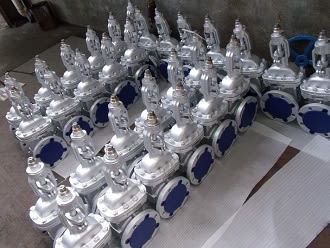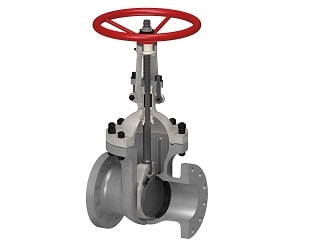5 most important things to consider when choosing a valve supplier
Are you in the market for an industrial valve to protect your compressors or blowers? Or maybe looking for a premium quality safety valve for a power generating system, choosing the best supplier is the most significant decision that you have to make. If you develop a relationship with an authentic valve company, you can be sure of getting the right products, at the most feasible price, to meet your needs. Those products are well maintained throughout their functional life cycle.
Here we discuss the 5 most important things to consider when choosing a valve supplier.
Stock on hand
Check for the amount of inventory the supplier carries on hand. This number is significant because it indicates the time that you will take to receive the ordered valves and parts. This can be of extreme importance during planned outages or during an emergency. If you contact a Trunnion ball valve supplier that has a large inventory on hand, you can increase your chances of receiving them as and when needed.

Preventive maintenance services
Regular maintenance is essential to achieve high performance out of your valves and products, for example, double block and bleed valve. Though recommendations for preventive maintenance is varying, you should search for a supplier that better understand your needs and can do maintenance jobs with little disruption to your functions. Check whether or not the supplier uses any kind of valve management software to centralize valve history and maintenance data for identifying maintenance and repair needs.
Repair services
Sometimes well-maintained valves require repair, so search for a valve repair that can take care of a wide range of valves, both in the field and in the shop. Check whether or not the supplier is a member of any valve repair council. If you are dealing with pressure relief devices, ensure that your supplier is certified by the federal board for repair services. These designations are necessary because they guarantee that your valve will be taken care of with its real specifications.
Besides industry certifications, search for a supplier who has a team of technicians with excellent factory training experience. For example, particular centers are authorized to repair pressure relief valves, Floating ball valve, etc. So, learn more about valve certifications and choose a supplier that has a team of well-certified technicians.
Actuator sales and services
Actuators and valves work hand in hand. If you want your supplier to help you choose the best products for your process from beginning to end, then choose a supplier that better understands the relationship between actuators and valves and can offer you services for both types of products.
Dedication to safety
Safety is the major issue related to gate valve installations, and regulations related to safety norms change frequently. There could be a systemic lack of supervision on gas pipelines, so the national safety board might issue new and improved safety recommendations to influence regulations at state and local levels. If you want to ensure your projects in compliance with regulations, look for a valve supplier that better understand the regulatory landscape and showcase a commitment to safety.
A Brief Introduction to Ball Valves
Valves are generally divided into several types to reach their particular specifications and functions. Now, a deep look at the ball valve is taken here. Similar to other valves, a ball valve is usually used to control the flow. The featured part is a spherical disc, which controls the flow through it.
And there is a hole or port in the middle of the sphere. In fact, the two end of the valve determines a lot. When the two ends of the valve in line, flow will occur. And when the valve is closed, the hole is perpendicular to the ends of the valve, and flow is blocked. During this process, the handle or lever will do a great favor being inline with the port position Globe valve.
Basing on particular specifications and easy operation, ball valves are used extensively in industry as a result of versatility and wide range of supporting pressures and temperatures. And sizes typically range from 0.5 cm to 30 cm. Generally speaking, materials for the body are metal, plastic or metal with a ceramic center. And the ball is often chrome plated to enhance the durability and make the valve work perfectly at shutoff.

In order to reach some specific industrial requirements, ball valves are further classified into several types. From the perspective of body types, they are single body, three piece body, split body, top entry and welded. It is to say that the classification is based on the number of pieces of the valve. Though there are different types of valves, the operation is similar. And from the perspective of the bore of the ball mechanism itself, there are also many styles.
They are a full port, reduced port, V port, trunnion and cavity filler ball valve. What's more, manually operated ones can be closed quickly. And some are equipped with an actuator that may be pneumatically or motor operated. Those valves are usually equipped with a positioner. By doing this, it is easy for it to transform the control signal into actuator position and valve opening accordingly. For example, multi-port ball valves are generally with 4 ways, or more. They are also commercially available. And for the driving air-powered motors from forward to reverse, the operation is performed by rotating a single lever 4-way ball valve. What else, one piece ball valves are almost always reduced bore, which are relatively inexpensive and generally are throw-away. And two piece ones are generally slightly reduced (or standard) bore, they can be either throw-away or repairable non slam check valve.
In words, some general ideas about the ball valves have come into your mind, I suppose. Hope they would be widely used in order to improve the industry, as well as our daily life.